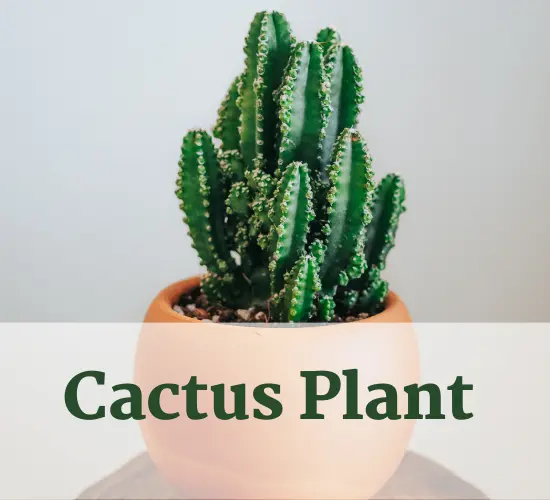Table of Contents
Cactus Wrinkled
Cacti are fascinating plants known for their ability to survive in arid conditions. However, even these hardy plants can become dehydrated and begin to shrink and wrinkle if not watered properly.
In this article, we will provide helpful tips on how to revive your shrinking cactus through proper watering techniques, as well as identify common issues that may arise.
To effectively revive a shrinking cactus, one must understand the delicate balance of moisture needed for these plants to thrive. Overwatering can be just as detrimental as underwatering, and it is crucial to find the right watering schedule that suits your cactus’s specific needs.
We will discuss how often to water your cactus, when to soak water, and the best methods for ensuring optimal hydration levels.
By following our expert guidance, you can revive your shrinking cactus and help it thrive once again.
Key Takeaways

- Understanding the delicate balance of moisture is crucial for cactus survival
- Overwatering can be just as detrimental as underwatering
- Soak-watering involves placing the plant in a sink or tub filled with water for at least 45 minutes
- To prevent overwatering, allow the soil to dry completely between waterings
Cactus Watering Tips
Proper cactus watering techniques are crucial, as the delicate balance of moisture levels requires allowing the plant to dry out completely between waterings. In well-drained soil, cactus requires water every 10 to 14 days during the summer months. Checking the root zone 2 to 3 inches below the surface of the soil can determine if watering is necessary.
Wrinkles on the cactus indicate that the plant is very dry and needs some watering. Soak-watering involves placing the plant in a sink or tub filled with water for at least 45 minutes. After soak-watering, check if the top 2–3 inches of soil are damp. If not, water the cactus slightly from the top of the soil to speed up the saturation. Drain the sink or tub and allow the plant to rest while it drains thoroughly.

Overwatering can be detrimental to cactus, leading to root rot, fungal issues, and other related problems. Signs of overwatering include the yellowing or browning of leaves, soft or mushy stems, and a bad odor or slime coming from the soil. To prevent overwatering, cacti should be allowed to dry out completely between waterings.
In addition, cacti should not be watered in the winter months, as they are dormant during this period. Proper cactus watering techniques, such as checking the root zone and using a soak-watering method, can help revive a shrinking cactus and prevent overwatering-related issues.
Identifying Common Issues
One common issue that can arise with cacti is the presence of gray scab-like marks on the plant’s surface. These marks are often caused by fungal or bacterial infections, which can be treated with a copper-based fungicide or a solution of one part rubbing alcohol and one part water. It is important to remove any affected areas with a sterilized knife or scissors before applying the treatment.
Another common problem that cacti face is overwatering, which can lead to root rot. Signs of overwatering include a soft, mushy stem, yellowing or wilting leaves, and a foul odor coming from the soil. To prevent overwatering, it is important to allow the soil to dry completely between waterings and to ensure that the pot has proper drainage. If root rot is suspected, it is important to remove the affected areas and repot the plant in fresh, well-draining soil.
By identifying and addressing common issues, cacti can thrive and continue to be a beautiful addition to any home or garden.
Read about other indoor plants
Frequently Asked Questions
Can a cactus recover from being overwatered?
Preventing cactus root rot involves avoiding overwatering, which can be identified by signs such as yellowing or mushy roots. To revive an overwatered cactus, remove it from the soil and allow it to dry out completely before replanting in fresh, well-draining soil.
How often should I fertilize my cactus?
Cacti, being slow-growing plants, require minimal fertilization. Fertilizer frequency depends on the type of fertilizer used, but generally, cacti should be fertilized once or twice a year during the growing season with a low-nitrogen, water-soluble fertilizer.
Can cacti thrive in low-light conditions?
Cacti are adapted to thrive in high-light conditions, but some species can tolerate low light. Choosing the right species and providing adequate light and care can promote growth and adaptability in low-light environments.
What are some common pests that affect cacti, and how can I treat them?
Common cacti pests include spider mites, mealybugs, and scale insects. Prevention techniques include regular inspection, quarantine of new plants, and proper watering. Pest control options include insecticidal soap, neem oil, and horticultural oil, applied according to label instructions.
Conclusion
In conclusion, proper watering techniques are crucial to maintaining the health and appearance of your cactus. It is important to find the delicate balance of moisture, as overwatering can be just as damaging as underwatering. A good rule of thumb is to water your cactus when the soil is completely dry, typically every 2–4 weeks, depending on the environment.
Be cautious of gray scab-like marks on your cactus, as they may be a sign of a fungal infection or sunburn.
As the saying goes, ‘ A stitch in time saves nine.’ Taking the time to properly care for your cactus now can prevent future damage and ensure its longevity. By following the watering tips and identifying common issues, you can revive your shrinking cactus and enjoy its beauty for years to come. Remember, cacti may be tough, but they still require proper care to thrive.
1 thought on “Cactus Wrinkled Tips: A Critical Review of Common Causes and Solutions”